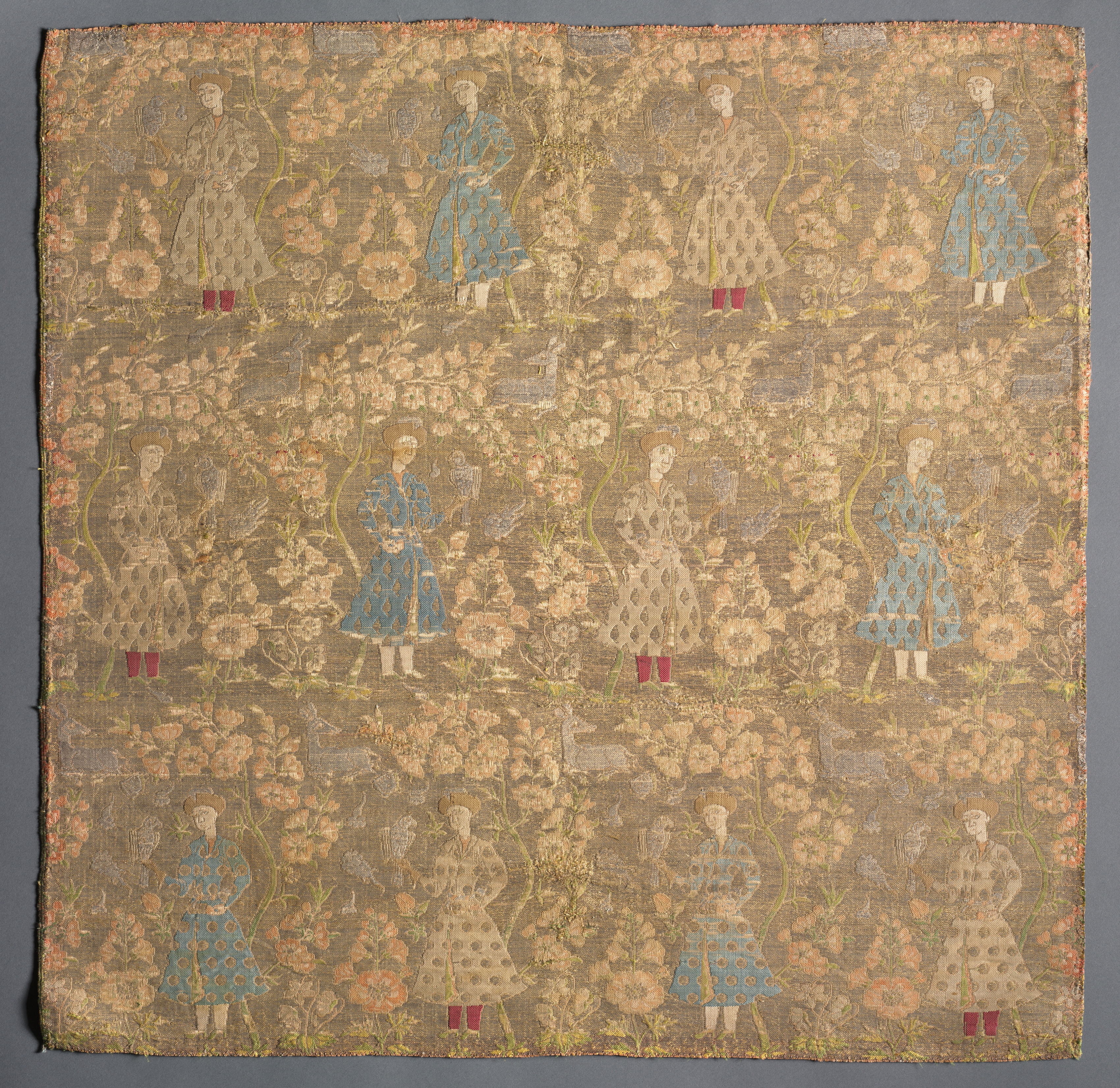The Cleveland Museum of Art
Collection Online as of April 20, 2024

Section of Silk Fabric with Falconers Amid Rose Bushes
c. 1675
(1501–1722)
Overall: 47.7 x 48.3 cm (18 3/4 x 19 in.); Mounted: 58.4 x 58.4 cm (23 x 23 in.)
John L. Severance Fund 1949.467
Location: not on view
Description
Twill-weave fabrics were used to make garments, especially jackets, during the Safavid period. It was not until after the 1570s that Iranian textiles began to regularly feature the human figure as a decorative motif. Weavers drew from Persian paintings for their subject matter, such as the favorite princely pastime of falconing. Trained falcons were brought on royal hunts to locate and retrieve the prey; close relationships developed between the falcon and the falconer.- ?-1949(Heeramaneck Galleries, New York, NY, sold to the Cleveland Museum of Art using the John L. Severance Fund)1949-The Cleveland Museum of Art, Cleveland, OH
- Shepherd, Dorothy G. "A Persian Textile of the Safavid Period." CMA Bulletin 37 (June 1950): 118-19.Shepherd, Dorothy G. "A Persian Textile of the Safavid Period." The Bulletin of the Cleveland Museum of Art 37, no. 6 (1950): 118-19. p.118-119 25141639.Mackie, Louise W. Symbols of Power: Luxury Textiles from Islamic Lands, 7th-21st Century. Cleveland; New Haven: Cleveland Museum of Art; Yale University Press, 2015. Mentioned and reproduced: P. 387, fig. 9.48
- Arts of Iran (Islamic art rotation). The Cleveland Museum of Art, Cleveland, OH (organizer) (October 30, 2018-October 28, 2019).
- {{cite web|title=Section of Silk Fabric with Falconers Amid Rose Bushes|url=false|author=|year=c. 1675|access-date=20 April 2024|publisher=Cleveland Museum of Art}}
Source URL:
https://www.clevelandart.org/art/1949.467